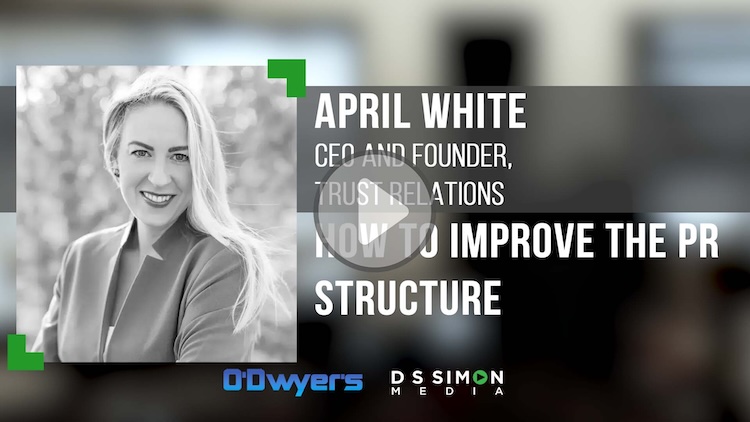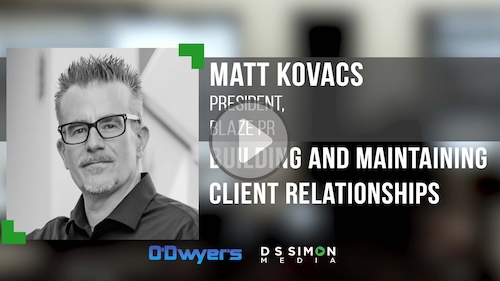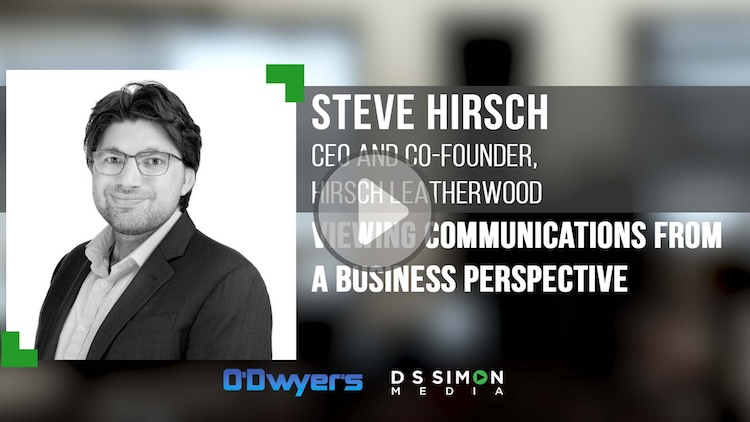As the curtain descended on 2013, the debate raged on about the “Death of Public Relations” as we know it.
In one corner stood the creaking PR oldsters, fighting to preserve the sanctity of media relations and freedom of the press and third-party endorsement. To these traditionalists, the mere thought of coupling advertising and marketing with public relations by paying for news was antithetical to everything for which the century-old profession stood.
In the other corner, equally certain that they were the new face of the field, stood the wet-behind-the-ears PR young bloods, eager to advance the agenda of 140-character tweets and Facebook friends and a blog on every block.
By year-end, neither camp was willing to yield much; 2014 promised to continue the battle. But even as the dust refused to settle, few in this now-burgeoning field could deny that the Public Relations times they were-a changin’ and that communications vehicles that once were considered anathema by earned media zealots were now the way of the world.
For example, sponsored content.
Sponsored content – also known as branded content or sponsored journalism or native advertising – is just that; content authored by and paid for by public relations professionals, placed in news site news columns, shoulder-to-shoulder with real news, to appear to look like the real thing.
In the past, no self-respecting newspaper or magazine would even consider such a blatant attack on the firewall between advertising and news. Indeed, as the Institute for Public Relations recently put it, “For lots of professional journalists, it represents a complete sell out – faux news cloaked in a fish wrapper and the antithesis of true reporting.”
Fair enough. But today, publications (if they still exist!) are more concerned with a new fact of journalistic life -- viability. Publications need revenue, and sponsored content is one way to achieve it.
That’s why the most venerable names in the media – from The Washington Post to the Financial Times to the Associated Press have joined the less venerable Politico, Business Insider and BuzzFeed as repositories for sponsored content. In fact, in 2013, sponsored content --- print and video -- was estimated to be a $1.5 billion industry.
So like it or not, sponsored content is here to stay. Get over it.
The real question is, How should a public relations professional approach this new hybrid vehicle? Here are a few suggestions:
· Realize this isn’t really “news.”
Consider sponsored content the advertising supplements and vanity magazine articles of the Internet Age.
Understand that readers know that these articles are “biased” in favor of the sponsoring agency – often to pitch a product or service or underscore a community relations or philanthropic commitment or talk up an industry for a trade association group. (Vice presidents of public affairs or similar corporate officers byline most.)
So hyperbole and boastful claims and adjectives that could be questioned should be avoided. Articles should be written straight, heavy on facts and short on superlatives. Let the facts of the program about which you are writing speak for themselves.
· Place the content in context.
Since the vast majority of readers (let’s hope) understand that sponsored content isn’t especially objective, public relations writers must take pains to place the subject matter in broader context – to underscore the “significance” of the content being discussed.
For example, CTIA -- the Cellular Telecommunications Industry Association – is a regular Washington Post sponsored content contributor, which spotlights its wireless communication industry.
In each piece, CTIA’s Public Affairs Director John Wallis places his industry’s role into broad context – for example, the number of mobile health applications available to wireless users (40,000) or the number of U.S. smart phones by 2017 (300 million). In this way, readers might understand the importance of the content, sponsored or not.
· Emphasize consumerism.
Much sponsored content – no surprise -- concerns products and services for sale. After all, why else would an organization pay a public relations person to ghost editorial copy for a news site?
In sponsored content, the best way to “pitch” products and services is by reinforcing their “value” to society.
For example, the National Dairy Council used a famous chef to narrate a sponsored content video suggesting dairy solutions for lactose intolerant consumers. IBM’s chief health officer authored a piece on how big data can help eradicate cancer.
The point is that such creative, consumer-oriented sponsored content can be a valuable complement to a broader public relations media campaign.
Sure it’s better to convince The New York Times, which is goingnative next year, to write a piece on your product’s societal contribution. But if the Times ain’t biting, sponsoring the content yourself may draw readers or viewers you otherwise would have missed.
· Discuss philanthropy.
Even when people used to read newspapers and magazines, editors were loathe to say nice things about all the good works for which those reviled capitalist giants might be responsible.
A friend of mine remembers when the very same New York Times purposely airbrushed out the name of the big bank sponsor of an inner-city festival featured in the paper.
So philanthropy – how big companies, in particular, “give back” to society – is an excellent topic for sponsored content. Why not share your philanthropic efforts with the world through sponsored articles citing how the money you’ve donated has been used to help the less fortunate among us.
· Avoid the hard sell.
Finally, hard sell should be avoided at all costs.
The most blatant example of over-the-top selling was The Atlantic’s disastrous experience with sponsored content from those wonderful folks at the Church of Scientology.
This infamous post, which lauded Scientology leader David Miscavige for creating a “new breed of church, ideal in location, design, quality of religious service and social betterment programs,” lasted about a nanosecond before outraged critics caused a chagrined Atlantic to replace the Scientologist’s self-congratulatory content with a circumspect note: “We have temporarily suspended this advertising campaign pending a review of our policies that govern sponsor content and subsequent comment threads.”
To which all those aging public relations purists cooed in unison, “Amen Brother.”










 Have a comment? Send it to
Have a comment? Send it to 
No comments have been submitted for this story yet.